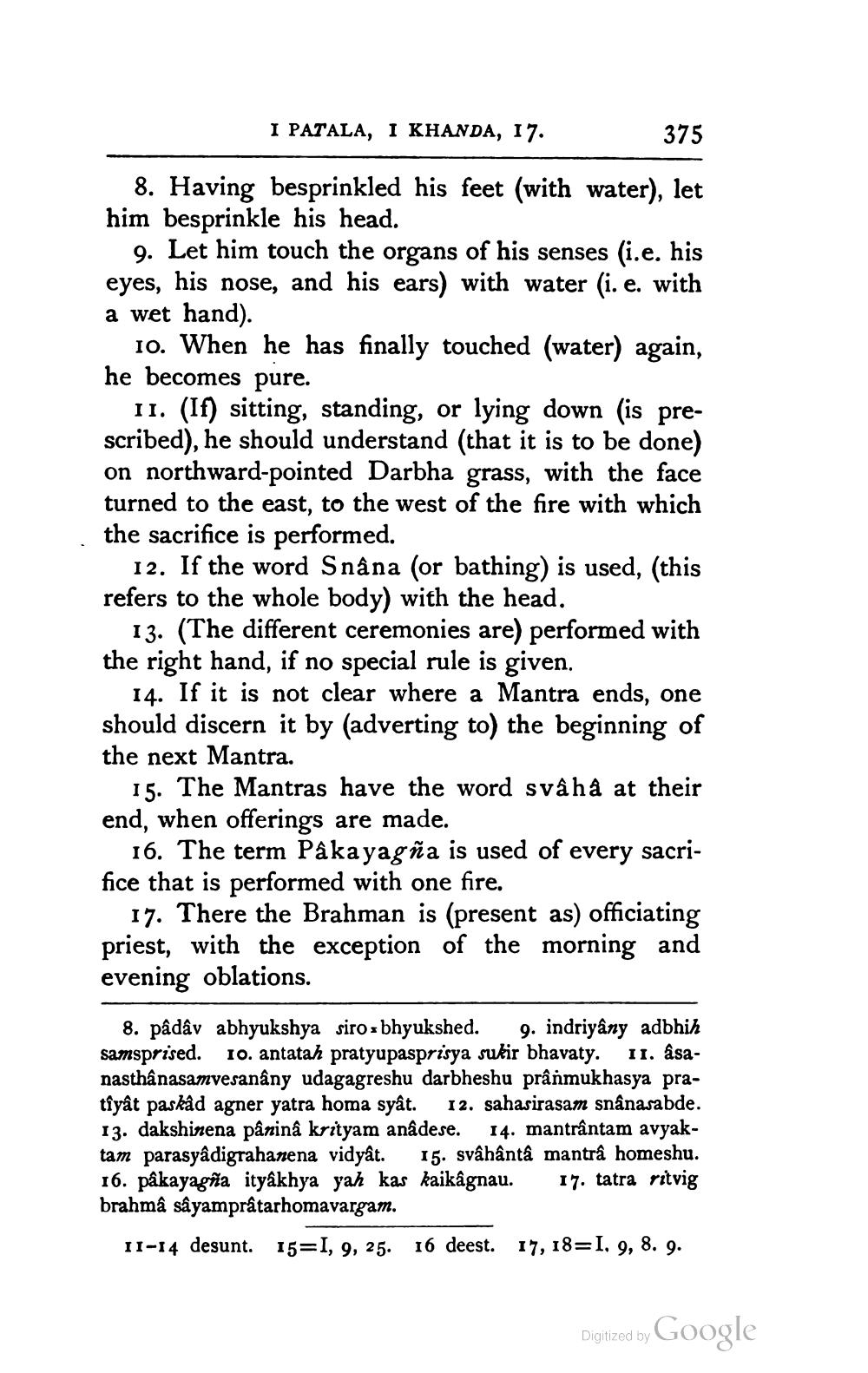________________
I PATALA, I KHANDA, 17.
375
8. Having besprinkled his feet (with water), let him besprinkle his head.
9. Let him touch the organs of his senses (i.e. his eyes, his nose, and his ears) with water (i. e. with a wet hand).
10. When he has finally touched (water) again, he becomes pure.
11. (If) sitting, standing, or lying down (is prescribed), he should understand that it is to be done) on northward-pointed Darbha grass, with the face turned to the east, to the west of the fire with which the sacrifice is performed.
12. If the word Snâna (or bathing) is used, (this refers to the whole body) with the head.
13. (The different ceremonies are) performed with the right hand, if no special rule is given.
14. If it is not clear where a Mantra ends, one should discern it by (adverting to) the beginning of the next Mantra.
15. The Mantras have the word svâhâ at their end, when offerings are made.
16. The term Pâkayagña is used of every sacrifice that is performed with one fire.
17. There the Brahman is (present as) officiating priest, with the exception of the morning and evening oblations.
8. pâdâv abhyukshya siro s bhyukshed. 9. indriyâny adbhih samsprised. 10. antatah pratyupasprisya sukir bhavaty. 11. asanasthanasamvesanâny udagagreshu darbheshu prânmukhasya pratîyât paskâd agner yatra homa syât. 12. sahasirasam snânasabde. 13. dakshinena pâninâ krityam anâdese. 14. mantrântam avyaktam parasyadigrahanena vidyệt. I5. svẫhânta mantrả homeshu. 16. pâkayagña ityakhya yah kas kaikāgnau. 17. tatra ritvig brahmâ sâyampratarhomavargam.
11-14 desunt. 1551, 9, 25. 16 deest. 17, 18=I. 9, 8. 9.
Digitized by Google




